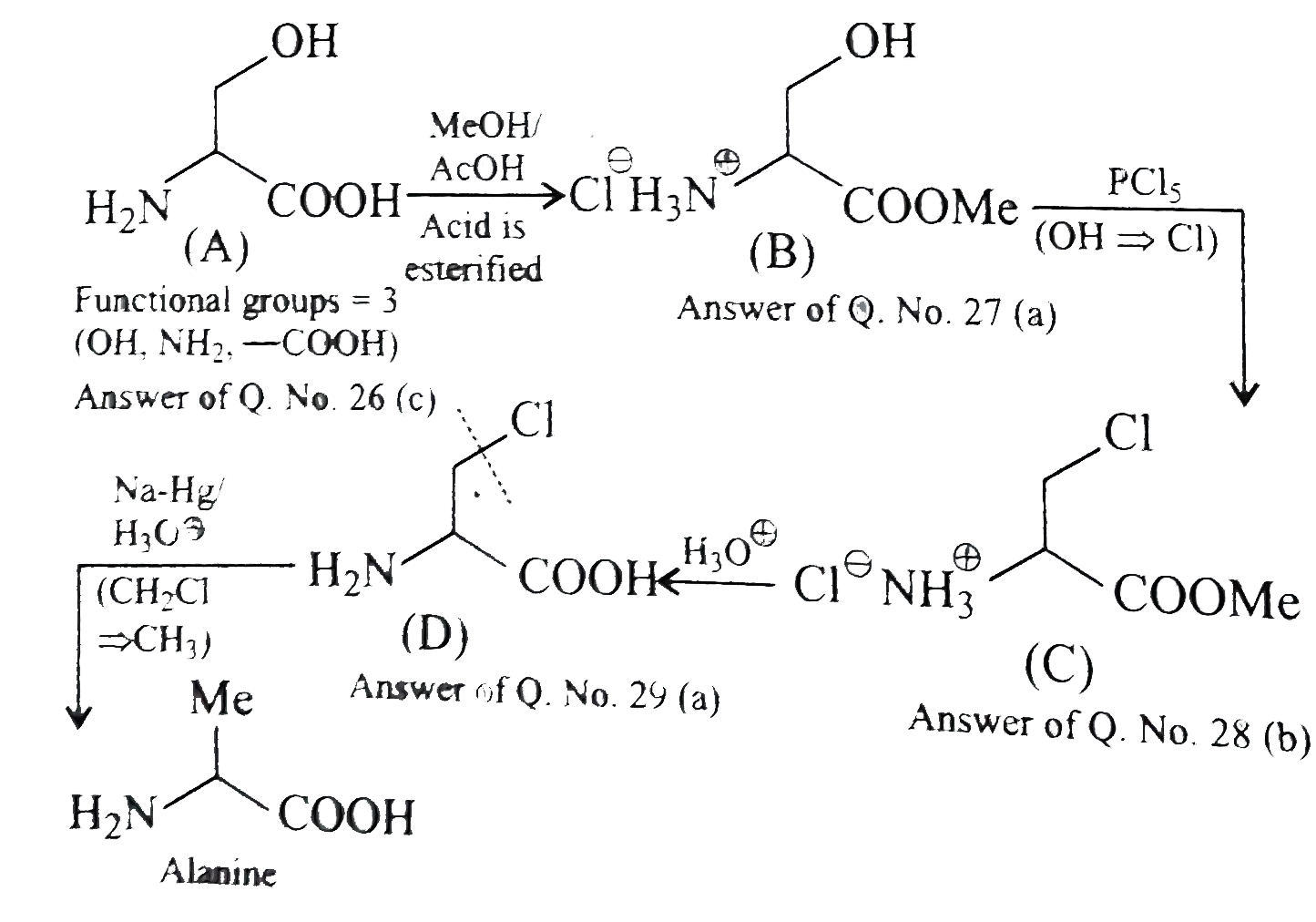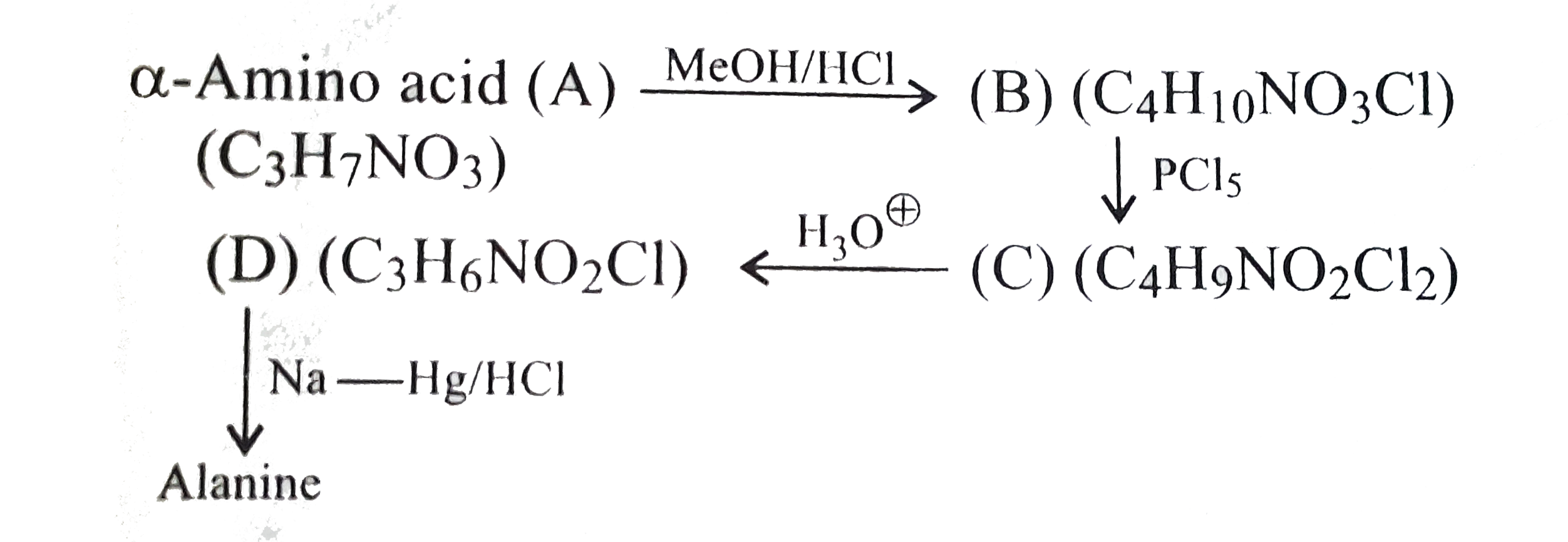
Compound (D) is:
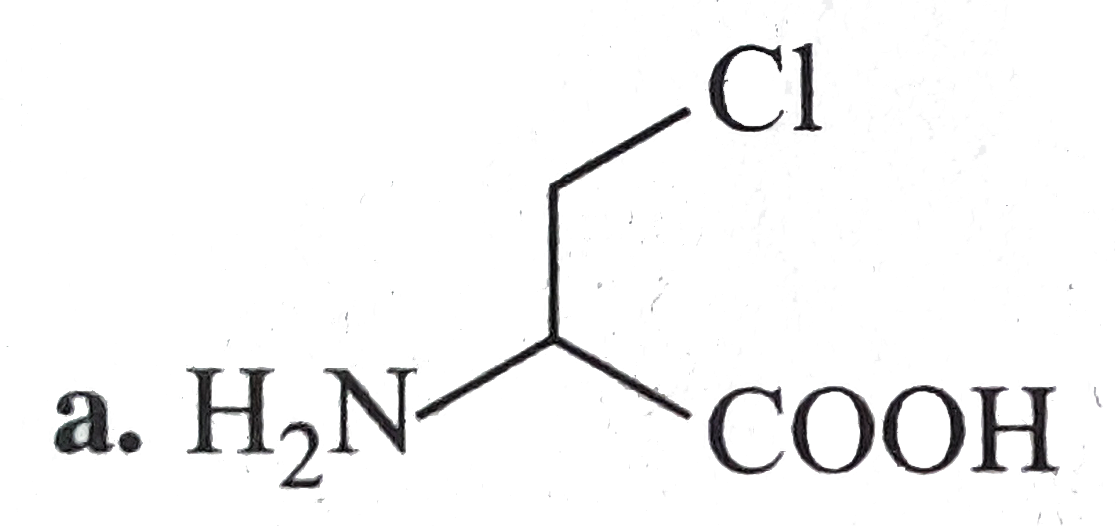
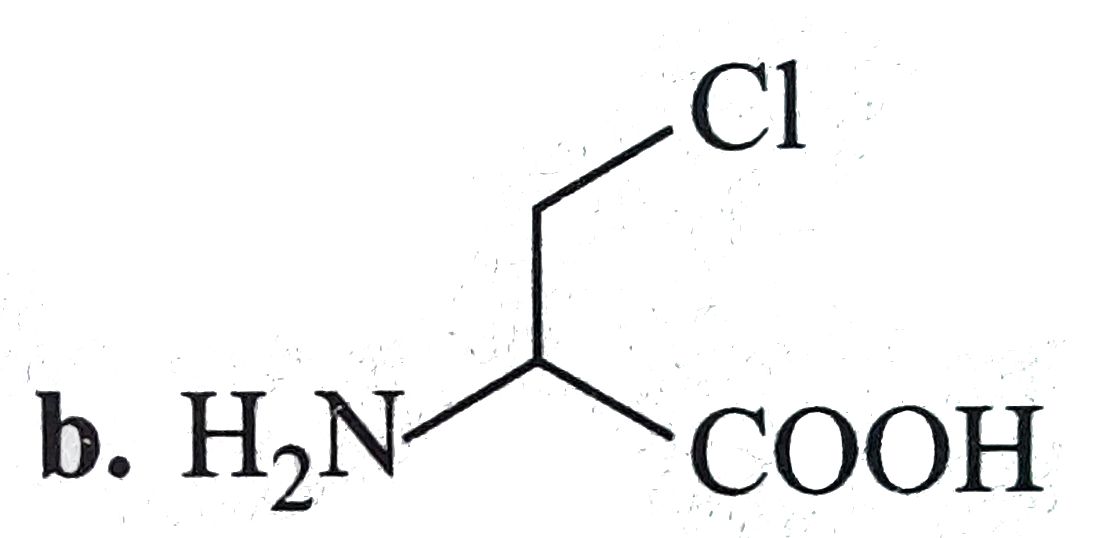
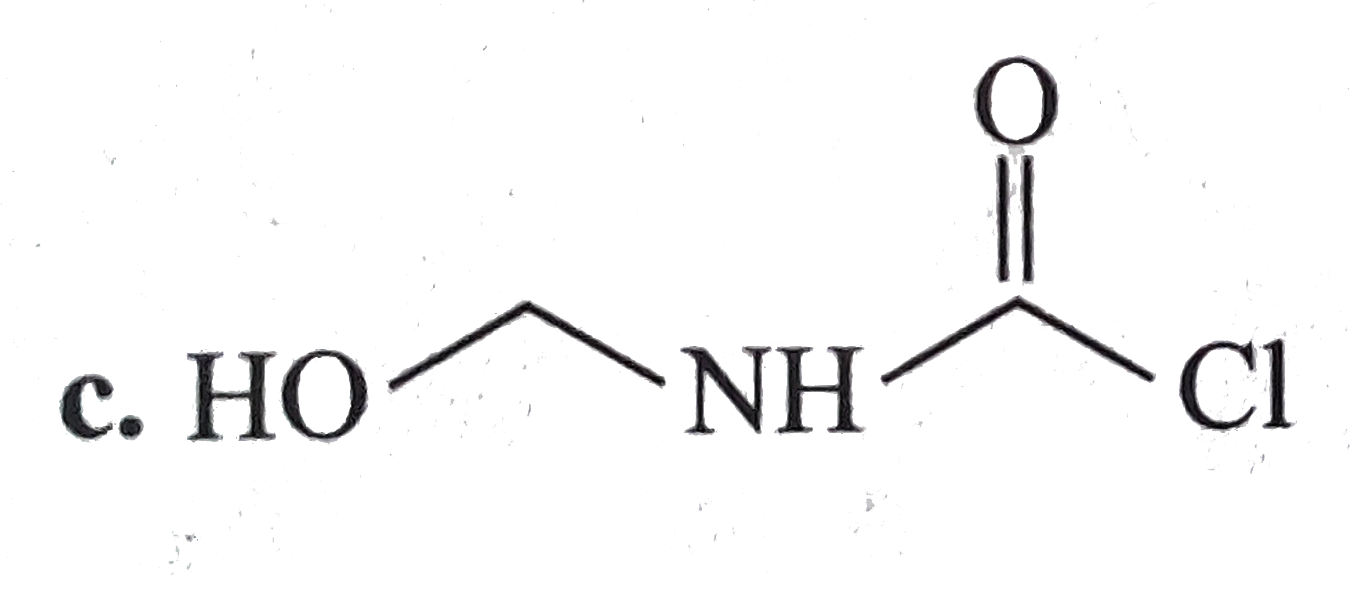
Both (b) and (c )
The correct Answer is:A
Topper's Solved these Questions
- BIOMOLECULESBOOK - CENGAGE CHEMISTRY ENGLISHCHAPTER - BIOMOLECULESEXERCISE - Exercises (Multiple Correcttype)
30 Videos
- BIOMOLECULESBOOK - CENGAGE CHEMISTRY ENGLISHCHAPTER - BIOMOLECULESEXERCISE - Exercises (Single Correcttype)
80 Videos
- BIOMOLECULESBOOK - CENGAGE CHEMISTRY ENGLISHCHAPTER - BIOMOLECULESEXERCISE - Exercises (Concept Application)
25 Videos
- AROMATIC COMPOUNDS AND ALKYL AND ARYL HALIDES BOOK - CENGAGE CHEMISTRY ENGLISHCHAPTER - AROMATIC COMPOUNDS AND ALKYL AND ARYL HALIDES EXERCISE - Archives Subjective Type
4 Videos
- CARBOXYLIC ACIDS AND THEIR DERIVATIVESBOOK - CENGAGE CHEMISTRY ENGLISHCHAPTER - CARBOXYLIC ACIDS AND THEIR DERIVATIVESEXERCISE - Exercises Archives (Analytical And Descriptive)
34 Videos
Similar Questions
i. Compound (A)
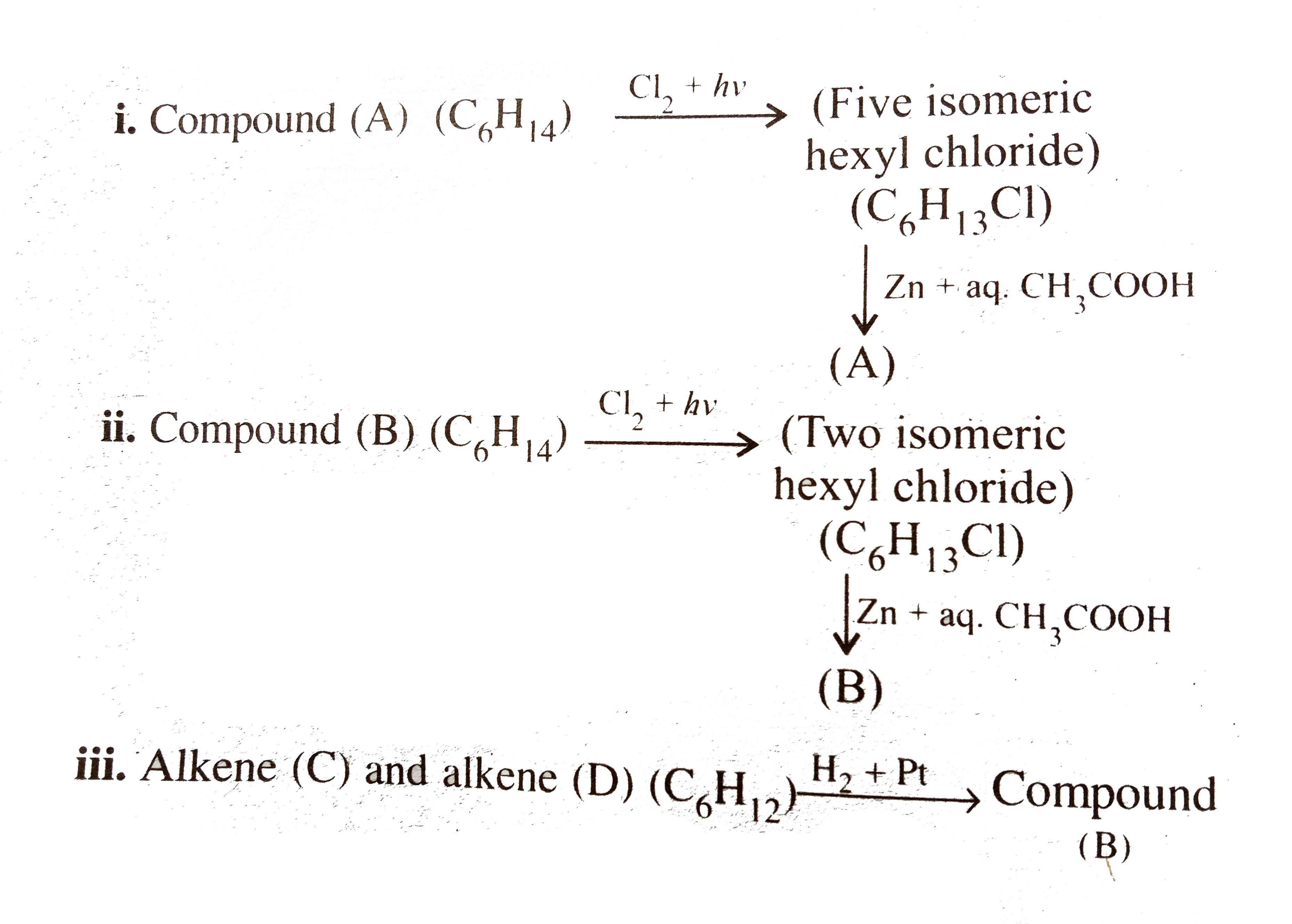
ii. Compound (B)
iii. Alkene (C) and alkane (D)
Compound (A) is:
View Solutioni. Compound (A)
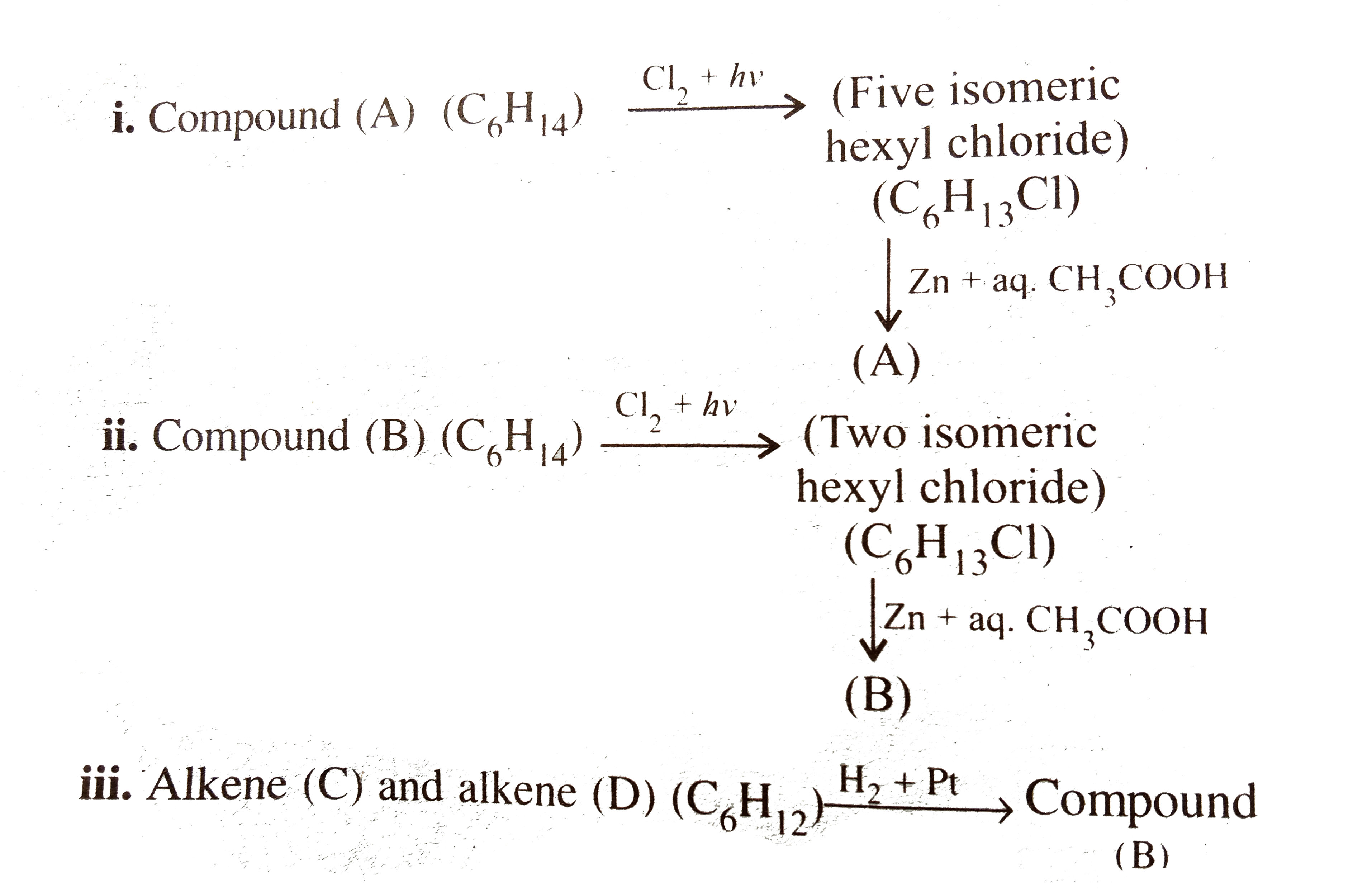
ii. Compound (B)
iii. Alkene (C) and alkane (D)
Compound (A) is:
View SolutionMatch each of the following four structures with one of the compound A-D on the basis of the following experimental facts
Compound (A),(B) and ( C ) are optically active, but compound (D) is not
Compound (C ) gives the same products as compound (D) on treatment with periodic acid, But compound (B) gives a different product.
Compound (A) does not react with periodic acid.

Compound A-D are respectively?
View SolutionWhen an oxide of manganese (A) is fused with KOH in the presence of an oxidising agent and dissolved in water, it gives a dark green solution of compound (B). Compound (B) disproportionates in neutral or acidic (C ) oxidises potassium iodide solution to a compound (D) and compound (A) is also formed. Identify compounds A to D and also explain the reactions involved.
View SolutionWhen compound (A) is treated with conc. H2SO4, a reddish brown colour gas (B) is evolved. To this solution, a solution of (C ) is added slowly from the side of the test tube, a blue ring is obtained at the junction of two layers due to formation of (D).
Compound (D) has formula :
View SolutionAn organic compound (A) having V.D. = 30 contains C = 60.0% and H= 13%. On treatment with PCI5 it gave another compound (B) which contained 45.2% chlorine and on hydration it produced a hydrocarbon (C) containing 85.7% C and 14.3% hydrogen. On successive treatment with HI and moist silver oxide, (C) gave a compound (D) which was isomeric with (A). Identity (A), (B), (C) and (D) and explain the reactions.
View SolutionAn inorganic red coloured compound (A) on heating gives a compound (B) and a gas (C). (A) on treatment with dil. HNO3 gives compound (D), brown colour substnace (E) and a neutral oxide (F). Compound (D) on warming gives off again gas (C). Then, (E) will be
View SolutionZnCI2+NaHCO3Heat−−→(A)Heat−−→(B)+(C)+H2O(B)+NaOH→(D)
Identify the compound (D) present in the solution.
View SolutionA violet compound of manganese (A) decomposes on heating to liberate oxygen and compounds (B) and (C ) of manganese are formed. Compound (C ) reacts with KOH in the presence of potassium nitrate to give compound (B). On heating compound (C ) with conc. H2SO4 and NaCl, chlorine gas is liberate and a compound (D) of manganese alongwith other products is formed. Identify compounds A to D and also explain the reaction involved.
View Solution(i) A powdered substance (A) on treatment with fusion mixture gives a green coloured compound (B). (ii) The solution of (B) in boiling water on acidification with dilute H2SO4 gives a pink coloured compound (C).
(iii) The aqueous solution of (A) on treatment with NaOH and Br2− water gives a compound (D).
(iv) A solution of (D) in conc. HNO3 on treatment with lead peroxide at boiling temperature produced a compound (E) which was of the same colour at that of (C) . Identify A,B,C,D,E
View Solution

